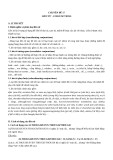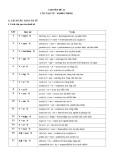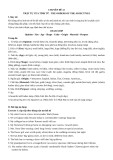
7+(617&7,&16(017,&)(785(62)
STYLISTICOXYMORONSINTHEENGLISHLANGUAGE
1HQ7KHRD
(PDLOKRDKPKRHQ
Received:05/08/2024
Revised:17/02/2025
Accepted:26/02/2025
DOI:10.59266/houjs.2025.533
EVWDFWKLVDWLHDLPVWRLGHQWLWKHVQWDWLDQGVHPDQWLHDWHVRVWLVWL
oxymorons in the English language. Some previous researchers and linguists have
studied oxymorons from dierent aspects- with a comparison and contrastin native and
non-native languages about the functions, concepts, categorizations, semantic logical
foundations,andexpressivevalues.Thearticleusesqualitativeandquantitativeresearch
methods with techniques like description, linguistic and contextual analysis, induction,
deduction, comparison,etc.Semantic elds andoxymoron types weregroupedas partof
thedatastatisticsfromacollectionof570oxymorons,basedonthesourcesofnumerous
articles,websites,plays,poems,textbooks,novels,shortstories,colloquialisms,everyday
conversations,sayingsandquotesforoneyear.Thedatawasthencombinedandanalyzedto
determinethesemanticaspectsofliteralandgurativemeaningsforthestylisticvariationof
literary,artistic,philosophical,media,andeverydayexpressions.Thisarticlewillcontribute
toavastunderstandingoftheoxymoronsoftheEnglishlanguagefromthelinguisticand
social-culturaldimensionsforbothlecturersandstudentsattheFacultyofEnglish,Hanoi
OpenUniversity.
.HRVsyntacticfeature,semanticfeatures,stylistic,oxymoron,gureofspeech.
HanoiOpenUniversity
,,QWURGFWLRQ
A comprehensive understanding of
English wordusage and linguistic devices
is essential for eective communication.
Oxymorons play a vital role in meaning
formation as both gurative speech
techniques and reasoning tools. By
DSRVLQJ RSSRVLQJ LDV SDUDRLFDOO
yet logically, oxymorons enhance literary
expression and everyday communication,
encouraging deeper reection and
interpretation.Theirabilitytocreatemulti-
ODU VPDQLF PDQLQJV DV ULFKQVV
to discourse. This study investigates the
VQDFLF DQ VPDQLF DUVR VOLVLF
oxymorons.Previousresearchhasexamined
oxymorons from various perspectives,
including their conceptual, categorical,
and expressive values, though some have
focusedsolelyontheirfunctions.Thisstudy
DLPV R FODUL RPRURQV VQDFLF DQ
VPDQLFSURSULVKURJKDDFROOFLRQ
andanalysis.Specically,itseekstoanswer:
(1) What are oxymorons’ syntactic and
semanticfeatures?(2)Whatarethecommon
stylistic types of oxymorons? A dataset








































